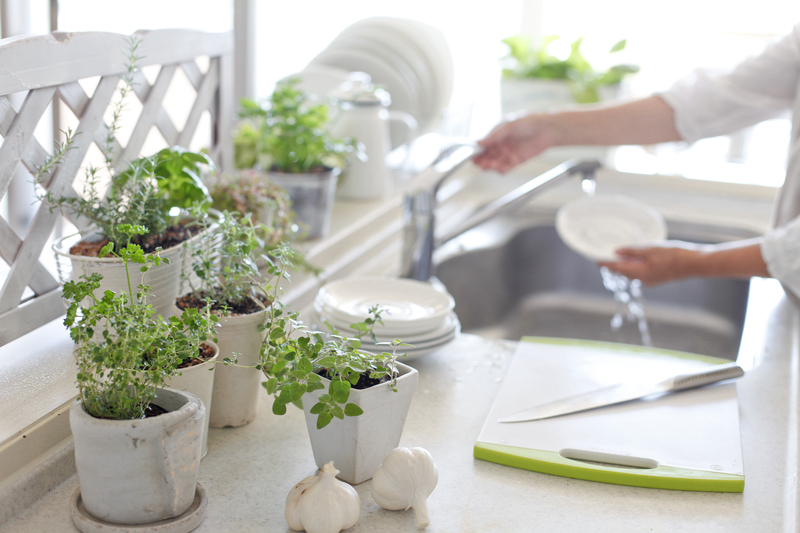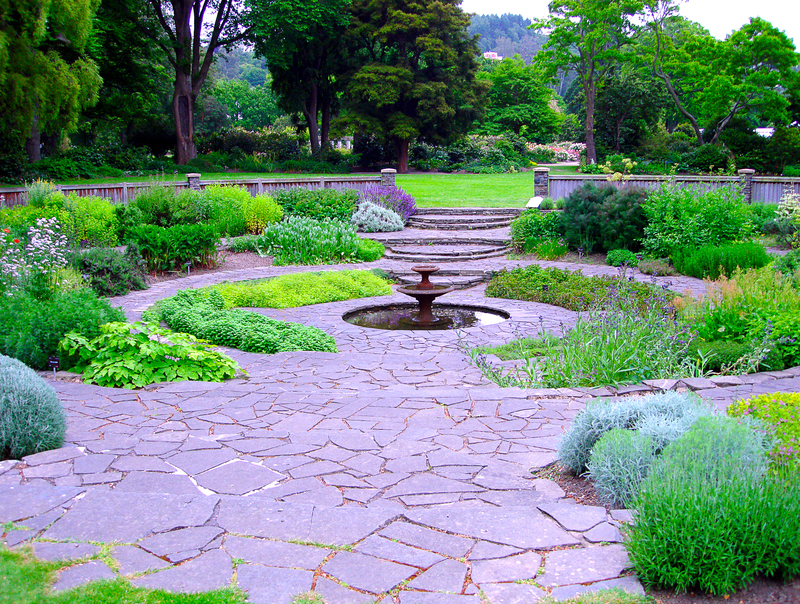The essentials of starting your own container garden
Posted on 18/06/2025
The Essentials of Starting Your Own Container Garden
Thinking about starting your own container garden? Whether you have a sprawling backyard or a tiny balcony, container gardening is a flexible, rewarding way to bring lush greenery and vibrant flowers into your life. It's also an ideal solution for aspiring gardeners limited by space or poor soil. This comprehensive guide will walk you through the absolute essentials for creating and maintaining a flourishing container garden, helping your plants thrive from day one.

Why Choose Container Gardening?
Container gardening offers a wealth of benefits for both beginners and seasoned green thumbs. Some of the top reasons people choose container gardens include:
- Space-saving: Perfect for apartments, patios, and rooftops
- Versatility: Grow vegetables, herbs, flowers, ornamental trees, or succulents
- Mobility: Move your plants to optimize sunlight and shelter from harsh weather
- Soil control: Bypass poor ground conditions by selecting your own soil mix
- Accessibility: Ideal for those with physical limitations--no bending or digging required
If you're aiming to maximize small spaces or want to experiment with different plant varieties, starting a container garden provides an excellent way to enjoy horticulture on your own terms.
Getting Started: Choosing the Right Containers
The foundation of any successful container garden lies in your choice of pots, planters, or baskets. Here's what you need to consider:
Material Matters
- Terracotta: Classic and porous, providing good drainage but dries out quickly.
- Plastic: Lightweight, affordable, and retains moisture well--great for forgetful waterers.
- Ceramic: Attractive and durable, though heavier and often more expensive.
- Wood: Natural look; ensure it's treated to resist rot.
- Metal: Stylish, but can heat up rapidly and may need extra insulation in sunny areas.
Size and Shape
- Match pot size to plant size: Deeper containers are key for root vegetables; shallow pots work for herbs and succulents.
- Avoid overcrowding: Give each plant room to grow; overcrowding leads to competition for nutrients and water.
- Consider drainage: Always pick pots with adequate drainage holes. Poor drainage is a leading cause of sickly container plants.
Selecting the Best Soil for Your Container Garden
Unlike in-ground gardens, container plants depend on you to provide a healthy, nurturing environment. The type of soil you choose will make or break your container gardening journey.
- Don't use regular garden soil: It's often too heavy, compacts easily, and may harbor diseases.
- Opt for high-quality potting mix: Commercial potting soils are formulated to be lightweight, well-draining, and rich in nutrients.
- Consider mixing in amendments: Compost, perlite, coconut coir, or vermiculite can boost moisture retention and improve soil structure.
- Match the mix to the plant: Cacti and succulents like sandy, fast-draining soil; herbs and most flowers thrive in all-purpose mixes.
Choosing Plants for Your Container Garden
The sky's the limit when it comes to what you can grow in containers. However, consider these key factors before you select your container garden plants:
- Sunlight requirements: Assess how much direct sun your space gets daily. Pick sun-loving or shade-tolerant plants accordingly.
- Plant compatibility: Group plants with similar water, fertilizer, and sun needs.
- Growth habit: Combine upright plants with trailing varieties for a lush look.
- Climate: Choose plants that will thrive in your region and season, or be prepared to move delicate species indoors during winter.
Popular Choices for Container Gardens
- Herbs: Basil, rosemary, thyme, chives, mint
- Vegetables: Tomatoes, lettuces, peppers, radishes, beans
- Flowers: Petunias, marigolds, pansies, impatiens, begonias
- Foliage plants: Ferns, hostas, ornamental grasses
- Succulents and cacti: For striking, low-water displays
Mix and match these for a display that's both beautiful and edible!
Location, Light, and Water: The "Holy Trinity" of Container Gardening
Find the Perfect Spot
Successful container gardening means observing your environment. Place your containers where:
- They'll receive the optimal amount of sunlight (full, partial, or filtered shade).
- Water won't pool underneath, which might damage surfaces or roots.
- You can easily access them for watering, harvesting, and maintenance.
Water Wisely
- Check soil daily: Container soil dries out faster than in traditional gardens.
- Water deeply: Ensure the entire soil mass is moistened--shallow surface watering isn't enough.
- Consider self-watering containers: These help maintain consistent moisture for thirsty plants.
*Tip: Stick your finger about two inches into the soil. If it feels dry, it's time to water.*
Balanced Feeding
Plants in containers quickly use up soil nutrients. Replenish with these practices:
- Use slow-release fertilizers mixed into the soil at planting.
- Try organic liquid feeds every 2-4 weeks.
- Monitor plant health--yellowing leaves or stunted growth may signal the need for more nutrients.
Planting Your Container Garden: Step-by-Step
1. Prepare Your Containers
- Clean your pots to remove old soil and pests
- Ensure all containers have working drainage holes--add pebbles or mesh if needed
2. Fill with Potting Mix
- Fill the container up to 1-2 inches from the rim for watering space
- Moisten the mix before adding plants--damp, not soggy, is best
3. Arrange and Plant
- Plan your design: place taller plants in the center or back, trailing ones near the edges
- Tuck in plants at the same depth as they were in their nursery pots
- Firm in the soil gently and water thoroughly
4. Ongoing Maintenance
- Deadhead spent flowers to encourage more blooms
- Pinch back herbs and vegetables for bushier growth
- Replenish top-dressing and nutrients throughout the growing season
Common Challenges--and How to Overcome Them
1. Overwatering or Underwatering
Consistent moisture is key, but containers can easily go too wet or dry. Check soil regularly, and consider mulch or water-retentive gels for hot weather.
2. Pest and Disease Management
- Inspect leaves frequently for pests like aphids or spider mites
- Remove affected plants or try organic controls (neem oil, insecticidal soap)
- Practice good hygiene--clean containers and tools between uses
3. Leggy or Weak Plants
If plants become spindly, check light levels (they may be stretching toward sun) and pinch or prune regularly for bushier growth.
Creative Ideas to Personalize Your Container Garden
- Upcycle old items: Turn teapots, boots, or crates into quirky planters
- Vertical gardening: Use hanging baskets, shelves, or wall-mounted pockets for small spaces
- Color themes: Match flowers, pots, and accessories for a coordinated look
- Aromatic appeal: Add fragrant herbs and flowers near windows or outdoor seating
The Seasonal Cycle of Container Gardening
Spring:
- Begin with cool-weather crops and hardy flowers
- Refresh soil and feed perennials as they wake up
Summer:
- Switch to heat-loving vegetables and blooms
- Mulch and water regularly during hot spells
Fall:
- Transition to cold-tolerant crops like kale or pansies
- Protect tender plants from first frosts--consider moving indoors
Winter:
- Store empty containers upside down to prevent damage
- Grow hardy greens or microgreens indoors on sunny windowsills
Container Gardening Tips for Beginners
- Start small: Choose a few easy plants to learn as you go
- Label your plants: Keep track of varieties, especially when experimenting
- Observe and enjoy: Spend time with your container garden, adjusting as you learn what works
- Join online communities and local groups: Share questions, advice, and inspiration

Frequently Asked Questions About Starting a Container Garden
1. What is the best container for a vegetable garden?
Large, food-safe plastic or glazed ceramic pots are ideal for vegetables--aim for at least a 5-gallon size for the best results. Ensure there are plenty of drainage holes and that the container is wide and deep enough for root growth.
2. Do potted plants need special fertilizer?
Yes! Nutrients leach out of pots quickly. Use a slow-release granular fertilizer at the start, then supplement with organic liquid feeds every few weeks during the growing season for healthy, productive plants.
3. Can you grow perennial plants in containers?
Absolutely. Many perennials, including herbs, small shrubs, and bulbs, thrive in containers. Make sure the container is large enough, and be ready to insulate, move, or protect them over winter if you live in a cold climate.
4. How do I prevent root rot in my container garden?
Always use well-draining potting mix and ensure pots have unobstructed drainage holes. Water only when the soil is dry to the touch 1-2 inches below the surface and avoid leaving pots in standing water.
Conclusion: Grow Your Own Container Garden Today!
Starting your own container garden is an accessible, enjoyable way to embrace gardening, whatever your living situation may be. With the right containers, a suitable soil mix, thoughtfully selected plants, and regular care, your little oasis will burst with color, scent, and perhaps even a tasty harvest.
So take the first step, gather your supplies, and unleash your creativity--your new container garden awaits!
Happy gardening!

